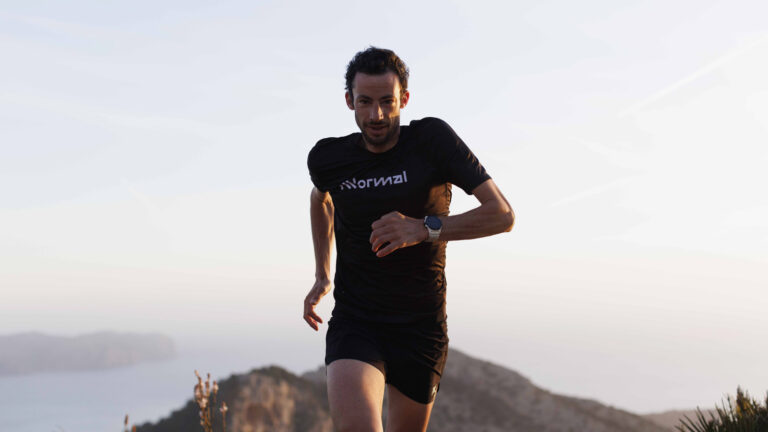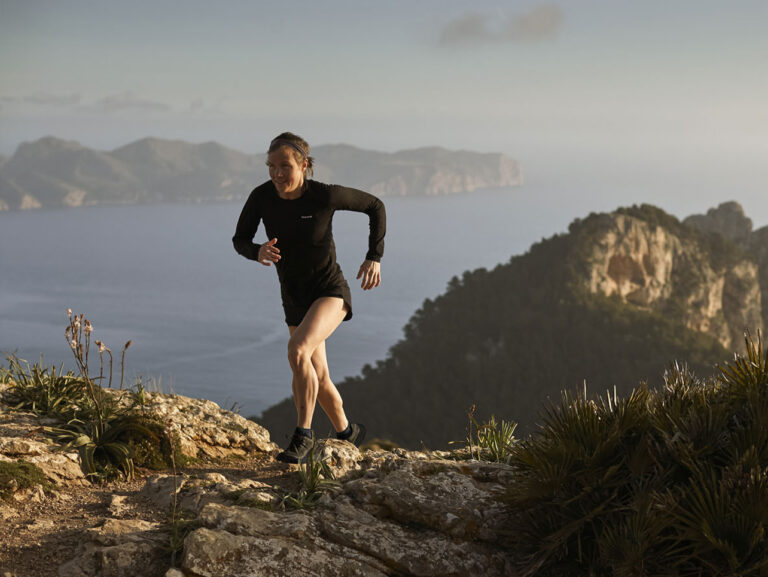Trail Running: The Do’s and Don’ts


Trail running has several benefits, not just physical but mental as well. It can be a great way to exercise, explore the outdoors, and find peace in nature. Learn more about the benefits of trail running here.


What is trail running?
A trail running race is a sport that involves covering a fixed course as quickly as possible. Races can be staged on natural terrains, such as through the woods, parks, or paved roads. The course length depends on the type of race, but they almost always consist of a series of intervals of various lengths, with the runners covering each interval as quickly as possible. While trail running may seem like a simple activity, it is a highly technical sport. The trail is an obstacle course for the runners, who must learn to negotiate uneven terrain, climb over rocks, negotiate streams, and traverse various surfaces. Trail runners need strong leg muscles, good balance, and a high endurance level. The difficulty of races also varies. Some races are flat and fast, while others are hilly and challenging.
Benefits of practicing trail running
1. It gives your brain a workout
Trail running is not only a great way to get your body in shape, but it’s also excellent for your brain. A study published in Frontiers in Human Neuroscience found that just 50 minutes of moderate-intensity aerobic exercise, like trail running, can help improve cognitive function. Researchers believe this is because aerobic exercise increases blood flow to the brain, which provides it with more oxygen and nutrients. So if you’re looking for a way to give your mind a workout and your body, hit the trails and go for a run.
2. It improves every element of your fitness
While running on the road is a great way to improve cardiovascular fitness, trail running provides a more holistic workout. When running on an uneven surface, your body has to work harder to maintain balance. This engages muscles in your core and lower body that you might not use as much when running on a flat, even surface. In addition, because trail running often takes place in hilly terrain, you’ll also get a great leg workout from all the climbing.
3. It will Improve your balance and coordination
One of the main benefits of trail running is improving your balance and coordination. This is because you will constantly change direction, jump over obstacles, and avoid tree roots and rocks. By doing this, you will be improving your proprioception (the ability to know where your body is in space) and developing the muscles that stabilize your joints. This will lead to better balance and coordination, which will transfer over to other activities and sports.
4. You will reconnect with nature
One of the best things about trail running is that it takes you away from the hustle and bustle of everyday life and allows you to reconnect with nature. When you are out on the trails, you will be surrounded by beautiful scenery, fresh air, and peace. This can help to reduce stress levels and promote relaxation.
The best gear for trail running
According to experts, the best way to train for trail running is by gradually increasing the distance and difficulty of your runs. Beginners should start with shorter, easier trails and work their way up to longer, more difficult ones. Once you have a good mileage base, you can start adding hills and other challenges to your training runs. Interval training, which involves running short bursts of speed followed by rest periods, is also beneficial for trail runners. This type of training helps build endurance and strength, both of which are essential for success in trail running. Many runners find that trail running is a great way to cross-train for other sports, such as mountain biking or skiing. By adding some variety to your training, you can prevent boredom and maintain your interest in the sport.

How to prepare for a trek
There is no one-size-fits-all solution for gear when it comes to trail running. The gear you need will depend on the trails you plan to run, the weather conditions, and your personal preferences. However, there are a few essential items that every trail runner should have. These include:
1. A pair of trail running shoes
Trail running shoes are designed to provide traction and stability on uneven surfaces. They also have a thicker sole than road running shoes to protect your feet from rocks and roots. When choosing trail running shoes, it’s important to find a pair that fits well and provides the right support for your foot type. It would help to consider the traction and sole thickness when selecting a shoe.
2. A GPS watch or phone
A GPS watch or phone can be a valuable tool for trail runners. It can help you track your distance, pace, and elevation gain. It can also be used to create a running route or find your way back if you get lost. Many GPS watches and phones also have features to track your heart rate, calories burned, and other health metrics.
3. A hydration pack
A hydration pack is a must-have for any trail runner. It allows you to carry water and other liquids with you on your run to stay hydrated even if there’s no water source on the trail. Hydration packs come in various sizes and styles, so you can choose one that fits your needs.
4. Trail running clothing
When choosing to clothe for trail running, it’s important to find comfortable, breathable, and durable items. You should also consider the weather conditions you’ll be running in and dress accordingly. For example, if you’re running in cold weather, you’ll need to dress in layers to stay warm. In hot weather, you’ll want to wear light-colored, breathable fabrics to help keep cool.
5. A headlamp
A headlamp is a must-have for any trail runner, especially if you plan to run in the early morning or evening. It will help you see the trail in front of you and avoid obstacles. A headlamp is also a valuable safety tool, as it can help other runners or hikers see you.
Difference between trail running and running
Trail running and running are both great forms of exercise. However, there are a few key differences between the two. First, trail running typically takes place on unpaved surfaces, such as dirt trails, while running usually takes place on paved roads or sidewalks. Trail runners need to be more careful of obstacles, such as rocks and roots. Second, trail running often involves more hills and elevation changes than running. This means that runners need to be prepared for a more challenging workout. Finally, trail running typically requires different gear, such as trail running shoes and a hydration pack.
The above point shows that trail running is a great way to build endurance, strength, and cross-train for other sports. It’s also important to have the right gear for trail running, as it can make a big difference in your comfort and safety. Always consider the type of trail you’ll be running on, the weather conditions, and your personal preferences when choosing gear for your next trail run.
A hike can go wrong due to incorrect or poor quality gear. Although the activity doesn’t require high-tech equipment, you still need a few basics. The first thing to choose is the right footwear. Invest in top-rated boots. Whether they are low or high is a personal preference. Focus on good support. Get footwear that can handle the terrain you plan to trek.
You require a sturdy backpack for the items you will carry for the trip. It must be lightweight with sufficient storage. A capacity of at least 20 liters should do.
Depending on the weather, you can bring a jacket along. Pick a jacket that is light enough to hike with while protecting you from the elements. The fabric should be breathable.
Include a first aid kit in your gear, especially when going for long hikes. Bandages, wraps, and pain medication are some must-haves.
Photography: Kilian jornet; Emelie Forsberg; Jaime de Diego
Share with a friend
Your NNormal shoes come with a free gift!